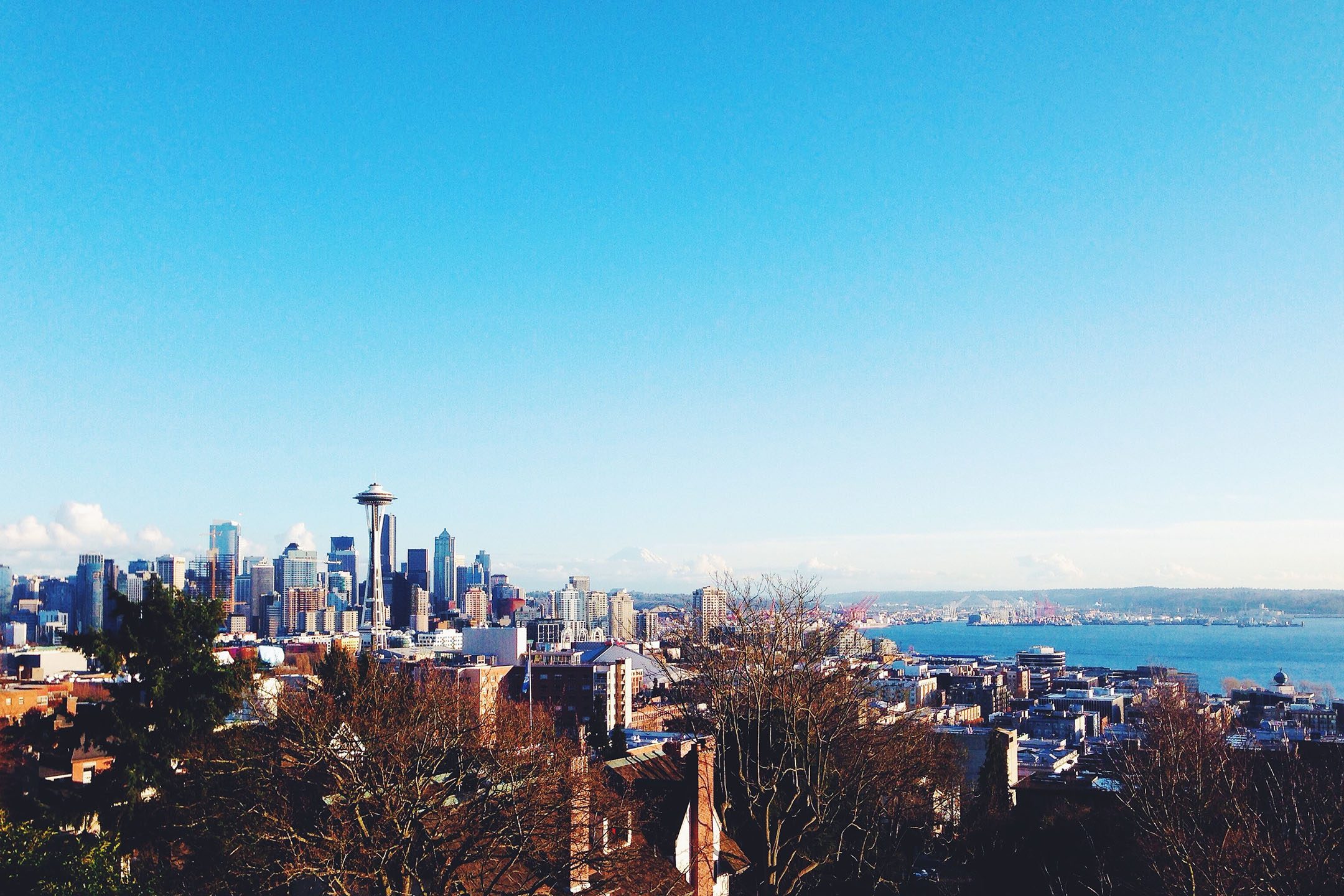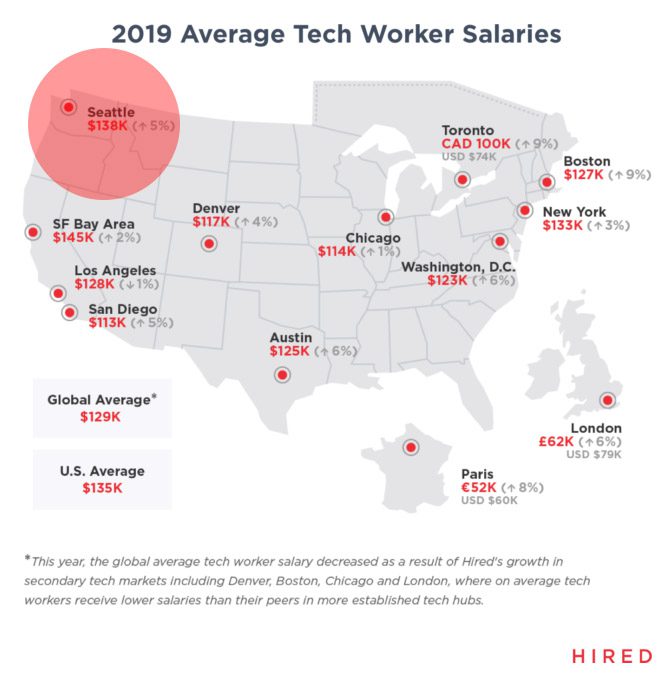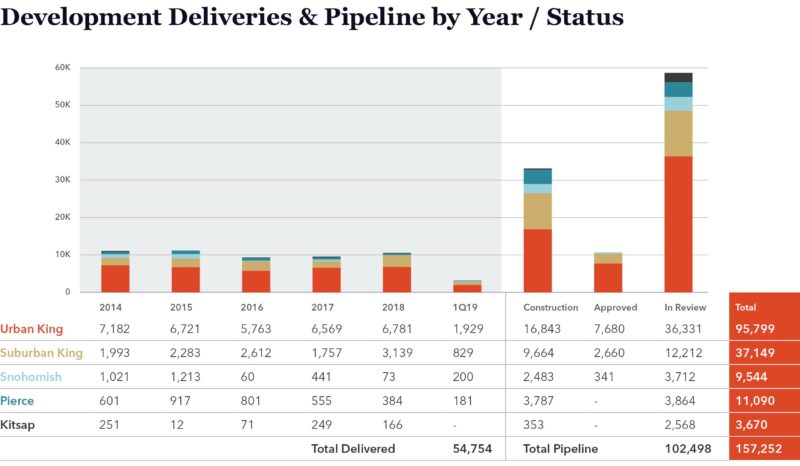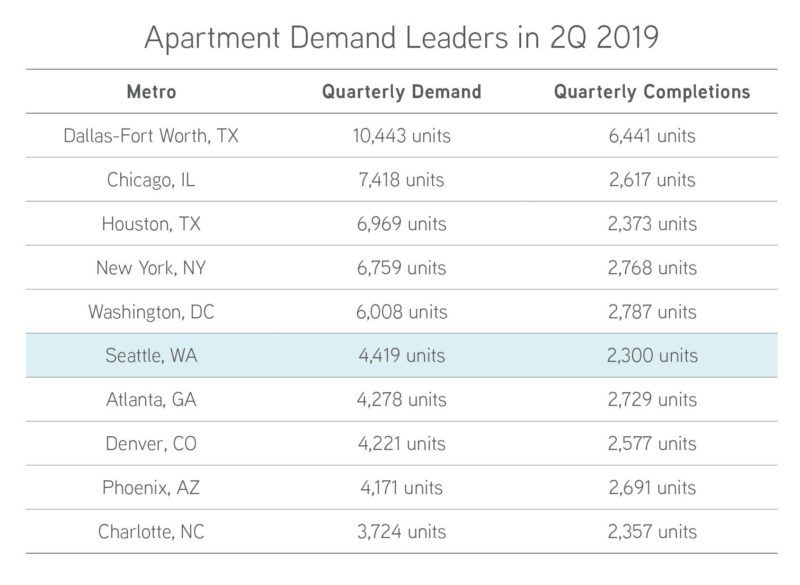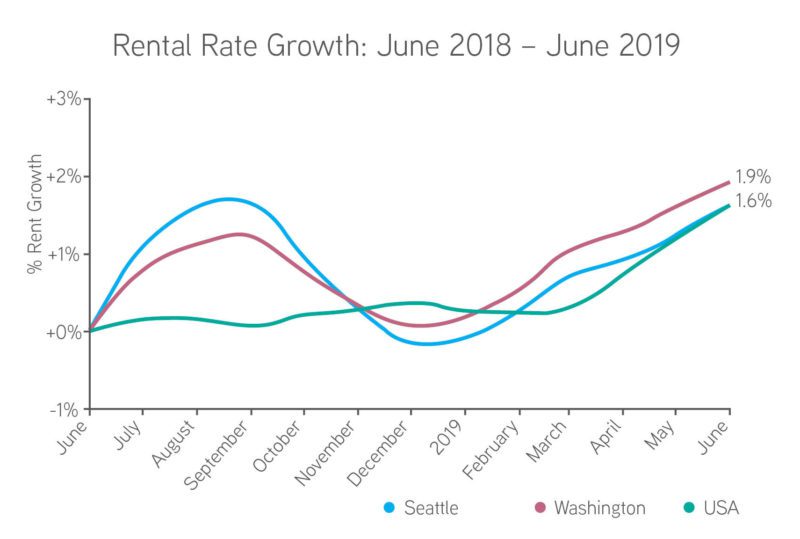Published in the Western Real Estate Business August Issue
Notions of Seattle as a grunge-rock town with logging roots are in the rear-view mirror. While Seattle’s past is marked by the 1850s Klondike Gold Rush, 1970s Boeing Bust and 1990s Microsoft Millionaires run, today’s economy is dotted with news of exceptional growth from Apple, Amazon, Facebook, Google and Salesforce.
To say that Seattle’s economy is both booming and diversified is an understatement. A benefactor of such continued growth is the regional rental market.
Jobs, Jobs, Jobs
Ecommerce juggernaut Amazon has assembled 12 million square feet of Class A office space in Downtown Seattle over the past several years. Now, Bellevue — not more than 10 miles from Downtown Seattle — is receiving attention from Amazon with commitments for 2 million square feet.
Adding to that, Apple is commit-ting to more than 625,000 square feet of office space; Facebook’s footprint is around 2.7 million square feet; and Salesforce has chosen Seattle as its second global headquarters.
Source: Hired 2019 State of Salaries Report via GeekWire
Given high wages and more economical for-rent and for-sale office and housing space (on a relative basis), it’s no surprise Seattle still has runway for sustainable economic growth.
Development Pipeline
Apartment developers seized upon Seattle’s modern day Gold Rush. Developers added 55,000 apartment units to the four-county region over the past four years, while the pipeline forecasts 100,000 additional units.
Urban is Popular, but Not the Only Game in Town
At the beginning of the current economic expansion (circa 2012), 80 percent of new apartment development focused on key urban neighbor-hoods like Capitol Hill and Ballard. Although still important, nearly 40 percent of the development pipeline is now shifting to alternative locations.
On trend with the rest of the nation, transit oriented development (TOD) is en vogue in the Seattle region. As light rail lines expand, developers are similarly expanding their footprints of new development.
Source: Kidder Mathews Multifamily Investment Team
Nation-Leading Apartment Absorption
The Seattle region’s apartment development pipeline is one of the most robust in the nation. With so many units delivering so quickly, critics are quick to question whether the market can sustain such levels of new deliveries.
Despite hypothecations of a slowing market, the data proves otherwise. Current data from RealPage indicates renter demand continues to outstrip supply.
Source: RealPage, Inc.
Rental Rate Growth Remains Positive
Signs of a vibrant market include sustained rental rate growth, low vacancy and absorption of newly delivered apartment units. On all metrics, Seattle remains on top of its game.
Apartment investors and developers enjoyed extremely strong rental rate growth in the recent past, with cumulative growth during the past seven years increasing by 60 percent. Although such storied growth tempered, sustained positive movement in rental rates is a testament to the strength of the market.
Source: Apartment List
A Bright Future Ahead
The next several years already look bright for Seattle. Globally recognized employers inked Class A office leases for that will absorb 6 million square feet in the next 36 months, creating demand for more than 25,000 high-wage workers.
Estimates for ancillary jobs supporting high-wage workers suggest that the Seattle region will need 20,000 to 30,000 new apartment units to accommodate apartment demand in the next three years. This economic vibrancy extends to other commercial real estate segments and supports the overall health of the region.
Expect Seattle to continue to make headlines as a leading city of economic stability and expansion!

